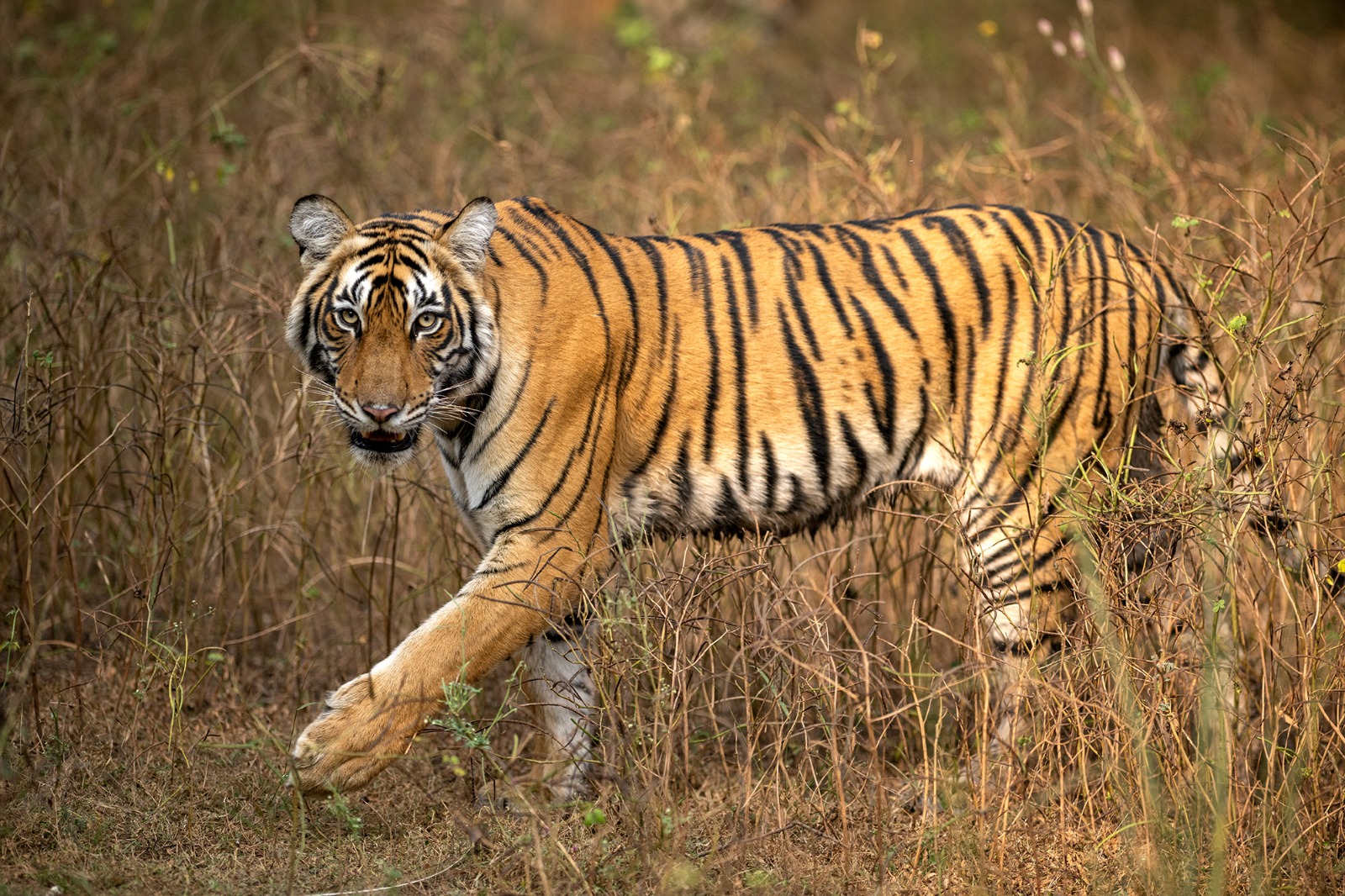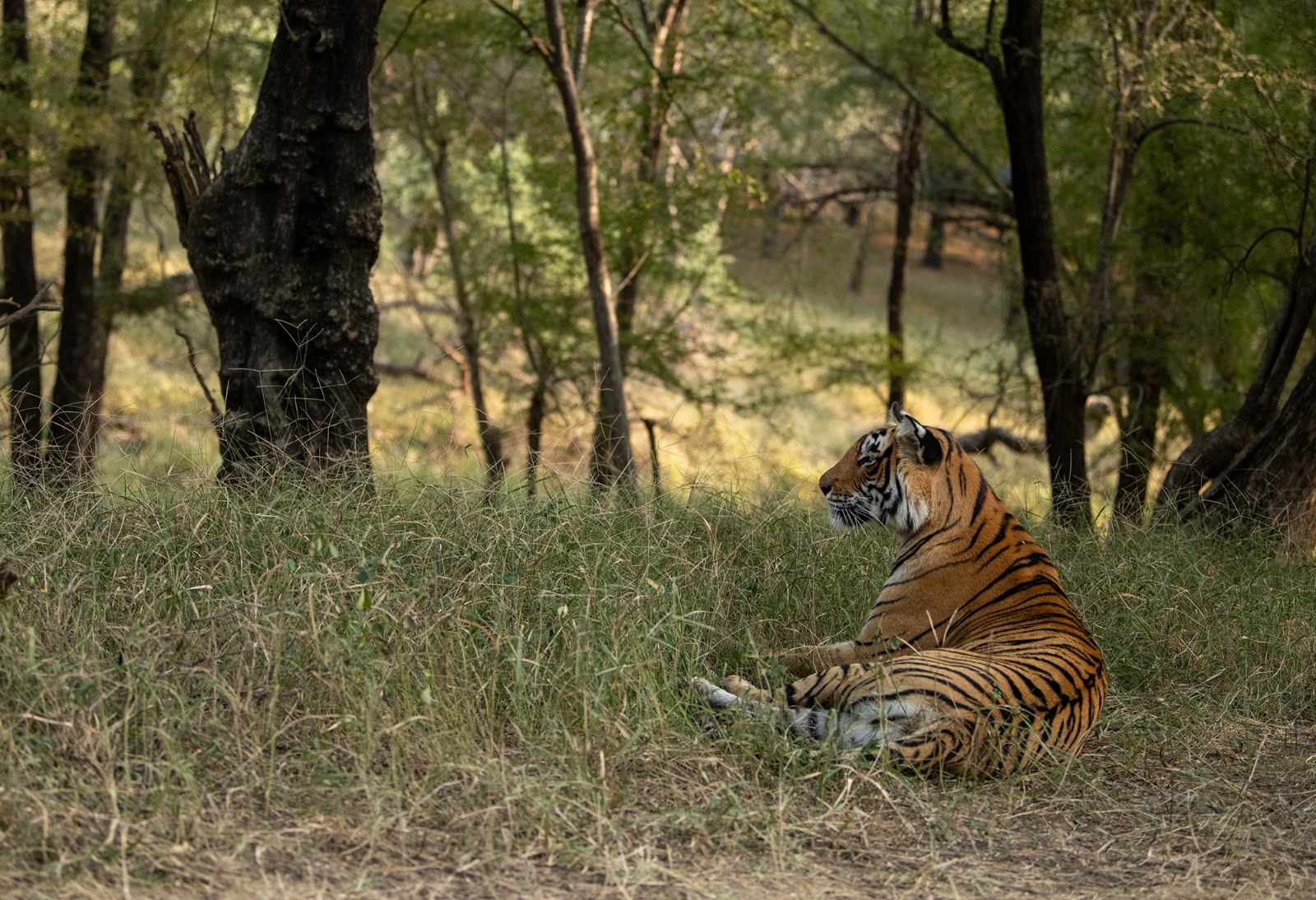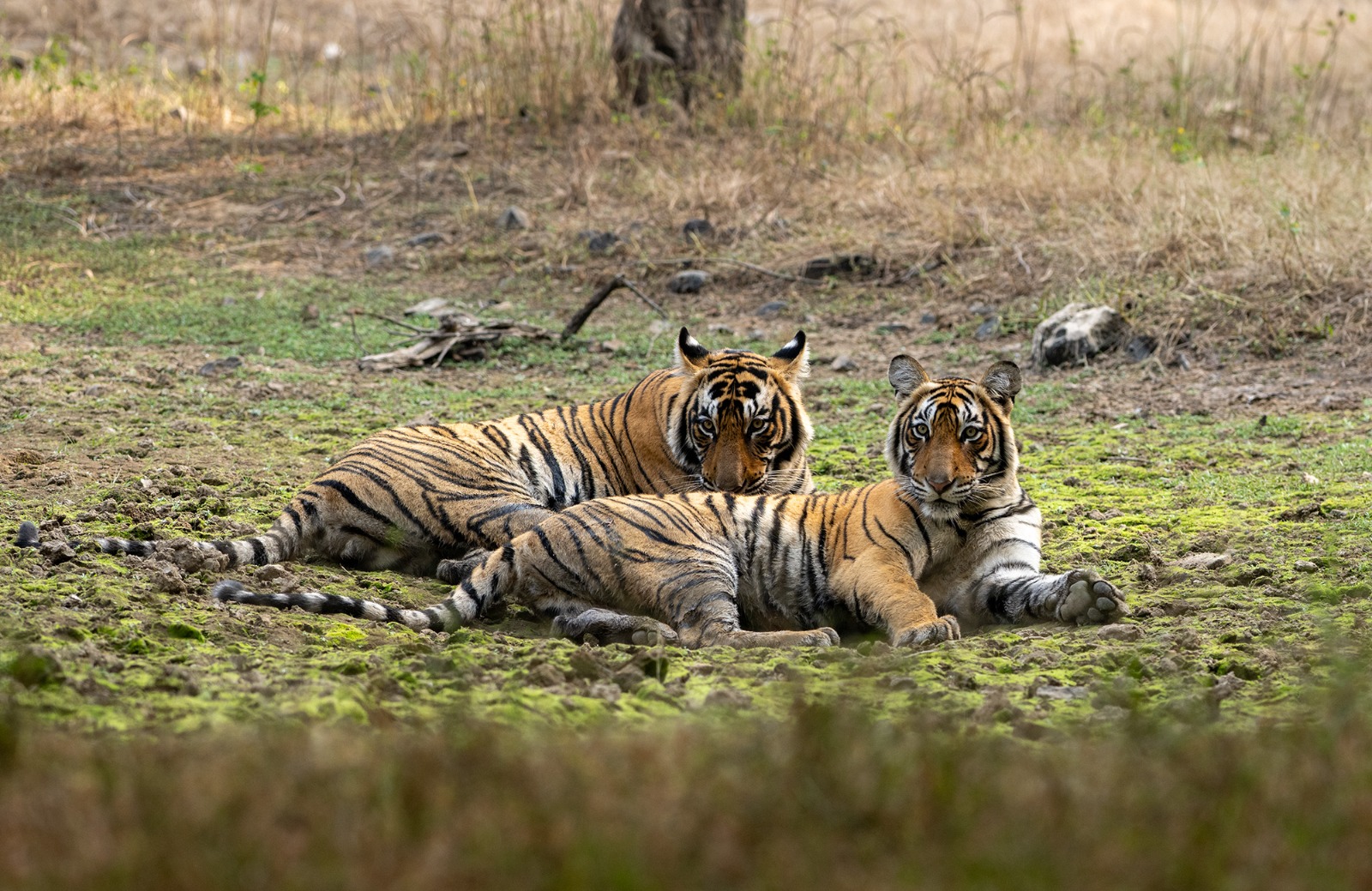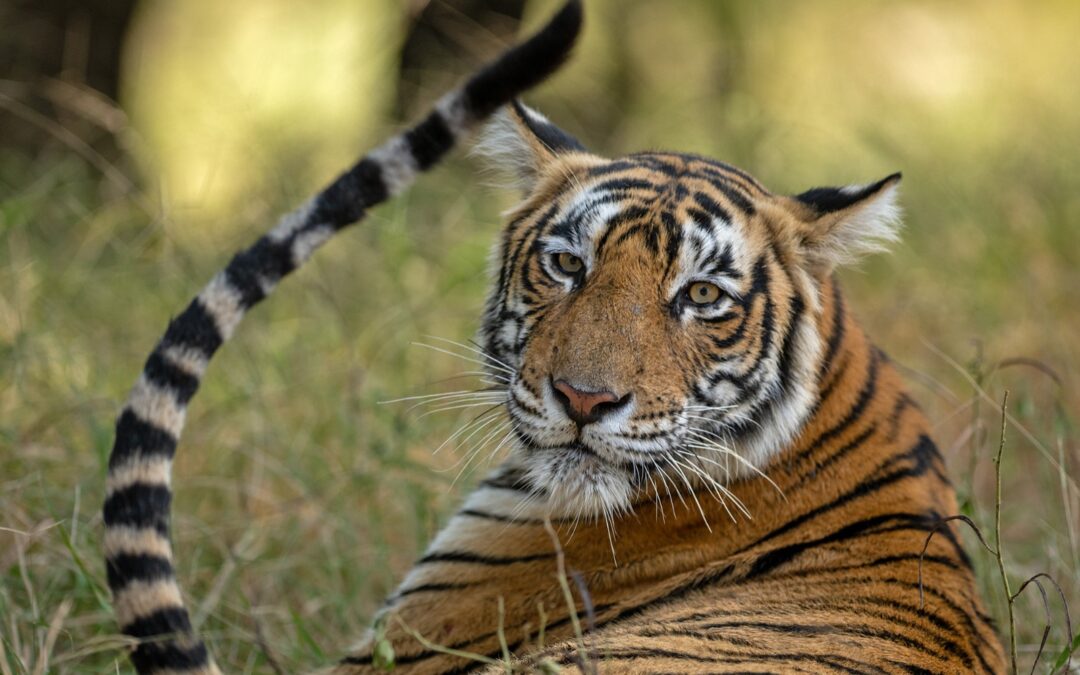Ranthambhore plays a pivotal role in tiger conservation in Rajasthan, acting as the primary source of tigers for other regions in the state. However, political pressures have often resulted in poorly planned translocations to newly established reserves, adversely affecting its tiger population. This article delves into the complexities and challenges surrounding Ranthambhore’s tiger population, examining their current status, rising conflicts, and the critical conservation issues that demand careful attention.

Key Questions Addressed in This Article:
- Why do male tigers in Ranthambhore often fail to reach their full lifespan and lose their territories prematurely? If space is the only issue, why do female tigers tend to live longer, with some even surpassing the age of 19?
- What are the current population figures of tigers in Ranthambhore, and How many males and females are there in Ranthambhore’s tiger population?
- What are the reasons behind the rising human-tiger conflicts?
1. Gender Imbalance Among Adults
Ranthambhore’s tiger population (Division I) consists of 46 adults—23 males and 23 females. However, only 18 of the 23 females are of breeding age, making the reproductive potential of the population more vulnerable. Additionally, while five tigresses (T08, T39, T59, T69, and T84) are over 15 years old and unlikely to reproduce, no male has crossed 11 years, indicating high conflict rates among males. There are also 15 cubs in Ranthambhore, in addition to the 46 adult tigers. Additionally, there are 4 tigers in the Kailadevi region (Ranthambhore’s Division II), bringing the total tiger population in Ranthambhore to 65.
However, claims of 88 tigers in Ranthambhore are incorrect. The population once reached 81 for certain, but many tigers died prematurely from natural causes. Including cubs in the tally is not an accurate method. This inflated figure is being promoted by the authorities to facilitate the relocation of tigers from Ranthambhore without facing opposition.
2. The Consequences of Tiger Translocations: Skewed Gender Ratios and Ecological Fallout
So far, 11 tigresses (T1, T18, T44, T51, T52, T83, T102, T106, T119, T134, and T2301) and 5 male tigers (T10, T12, T75, T110, and T113) have been relocated from Ranthambhore to other reserves. This 2:1 female-to-male translocation ratio has created a skewed gender balance in Ranthambhore. The newly created reserves, established under political influence rather than ecological readiness, were not conducive to tiger relocation. As a result, translocated tigers (T10, T12, T44, T75, T83, T102, and T106) faced high mortality rates, reduced reproductive success, and increased human-wildlife conflicts. Key areas within Ranthambhore, such as Guda and Kachida, now remain vacant due to the removal of resident tigers, disrupting the social structure of the population. The territory of T102, a translocated tigress, has remained unoccupied for over three years. Similarly, after male tiger T12 was relocated, his mate T13 left the park, and her two cubs perished.
3. High Number of Young Males Escalating Conflicts
The population in Ranthambhore includes 23 young male tigers, with the oldest being just 10 years old. Territorial disputes among these males have intensified, often resulting in fatal fights and forcing some to move to outer areas in search of new territories. Of these 23 males, 20 are under six years of age, indicating that conflicts are likely to continue escalating. Despite being aware of the skewed sex ratio in Ranthambhore, three female tigers were relocated to other areas last year. This highlights an urgent need to address the overpopulation of males to restore balance and reduce conflict.
4. Longevity of Female Tigers in Ranthambhore: Factors and Interventions
Female tigers in Ranthambhore often live longer, with some surpassing the age of 19. This longevity is partly attributed to interventions by park authorities, who frequently assist tigers facing health challenges or hunting difficulties by providing bait or other forms of support. While these measures ensure their survival during difficult times, they also artificially extend their lifespans by shielding them from the natural adversities of the wild.
Tigresses are more visible within the park, often receiving greater attention and support from authorities, who tend to adopt a softer approach toward them.
Moreover, the relocation of younger tigresses to other reserves has further reduced the number of females in Ranthambhore. As a result, the remaining tigresses, many of whom are older, face less competition for resources such as prey, water, and secure territories. This reduced competition has contributed to their extended lifespans.
However, the presence of older tigresses with limited reproductive potential gives the misleading impression that the park has a balanced or higher female population. This is compounded by the relocation of younger females, which undermines the long-term stability of the tiger population in the region.
5. Should Tiger Translocations from Ranthambhore Be Completely Stopped?
No, halting tiger translocations entirely is not the solution. The Ranthambhore tiger population plays a vital role in supporting the development of other parks within the state and beyond. However, such translocations require patience, careful planning, and well-informed decisions to ensure both the source and recipient areas benefit without jeopardizing the donor population.
Ranthambhore currently has 15 cubs nearing adulthood, offering potential for future translocations. However, further removal of tigresses at this stage could severely disrupt the population’s stability. It is crucial to balance the needs of other reserves with the long-term health and sustainability of Ranthambhore’s tiger population.

Recommendations
- Halt Further Tigress Translocations
The translocation of additional tigresses must be stopped to avoid destabilizing Ranthambhore’s population further. If translocations are necessary, moving a few males instead would alleviate territorial pressures while preserving the critical female population. - Collaborate for Genetic Diversity
Collaboration with states like Madhya Pradesh, which share political alignment, offers an opportunity for tiger exchanges. This would introduce new genetic diversity to Rajasthan’s tiger population and strengthen its long-term viability. - Focus on Division II Development
Rather than creating new reserves, resources should be allocated to developing Division II of Ranthambhore. Strengthening the source population is vital for sustaining tiger conservation efforts across Rajasthan. - Adopt Thoughtful Translocation Strategies
The recent translocation of tiger SBT 2303 serves as an excellent example of relocating drifting tigers without affecting core populations. Similar approaches, supported by rigorous monitoring and expert consultations, should guide future translocations. - Implement a One-Year Moratorium on Translocations
A temporary halt on translocations will allow for the intensive monitoring and study of potential candidates. This pause will help ensure that future relocations are science-driven and minimally disruptive.

Conclusion
Ranthambhore’s role as a tiger source for Rajasthan is invaluable. However, the conservation of this iconic species is not just a matter of space and increasing numbers; it is deeply influenced by management decisions and political motivations. In recent years, the forest department has relocated 1,500 human families from the park, making it inaccurate to say that humans are taking over the space of animals. These efforts demonstrate that, at least in the recent past, significant steps have been taken to reduce human encroachment on wildlife habitats. Misguided translocations, driven by political motives rather than ecological necessity, have jeopardized its population dynamics, threatening the region’s ecological balance. To secure Ranthambhore’s future and its ability to support other reserves, conservation efforts must prioritize scientific rigor, sustainable practices, and thoughtful management over short-term political gains. The challenges faced by Ranthambhore require not only attention to spatial concerns but also responsible and informed decision-making to safeguard the health and longevity of its tiger population.


Very valid point but new tiger reserve and protected areas r need of hour